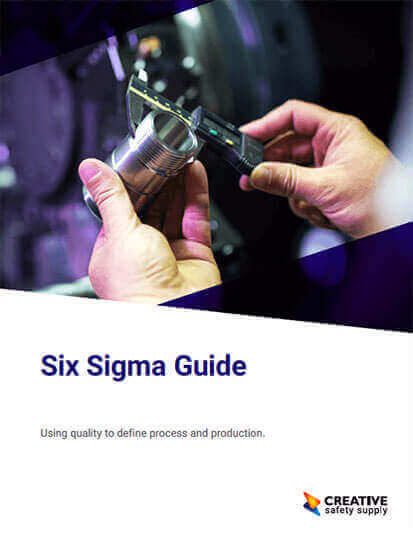
In a nutshell, these three elements encompass the following principles:
- Six Sigma aims to make continuous improvements to production. It believes stable and predictable production results are crucial to sustaining success in the long-term.
- Manufacturing processes can—and need to be—measured, analyzed, and controlled.
- In order for Six Sigma to succeed in a company, company-wide effort, commitment, and cooperation is required. Everyone, from machine operators to QA auditors to managers—need to take part in Six Sigma if changes are to take hold.
Six Sigma’s originality stems from its focus on ongoing improvement, working toward specific markers, and in-depth team involvement. It’s this attention to detail that allows the strategy to be so successful and stand out from other quality management philosophies.
More specifically, Six Sigma differs from other QA initiatives in the following ways:
- Concentration on measurable goals like concrete financial returns
- Relies heavily on strong and passionate management leadership and support
- Uses quantifiable, proven data and statistics to make decisions rather than forecasts, assumptions, or guesswork
These principles are inspired by the principles set forth by other Lean pioneers and experts. Here are just a few of the pioneers/philosophies that helped forge the foundation for Six Sigma:
Edward Deming’s philosophy on quality:
- He used statistical process control (SPC) to identify cause variations: This tenet emphasizes the need to identify both “special” and “common” variations
Special: hard to track—erratic
Common: easy to track, inherent in the system
- Invented the Plan Do Check Act (PDCA) model off of which the Six Sigma methods were based
Other important foundational ideas come from Joseph Juran, a management and engineering consultant, who developed the Pareto principle (aka the 80/20 principle)
- 80% of quality improvement is possible by fixing 20% of problems
Rule is meant to force focus on vital few over trivial many
- Quality looked at from customer’s point of view
From this perspective, quality has two aspects: More features; no trouble.
- Quality Trilogy Model: Quality planning, Quality improvement, Quality control
Philip Crosby was a quality pioneer who ignited the focus on quality in the US.
Philosophy:
- Quality should be defined by conformance to requirements, and not as exceeding customer expectations.
- Quality measured by cost of non-conformance
- Zero defects
- Do things right the first time.
Kaoru Ishikawa—theorist and professor at the University of Tokyo. Responsible for fishbone diagram which measures cause and effect.
- Suggested use of cause and effect diagrams to systematically list all the effects on a manufacturing process.
- Expansion of Demings PDCA model
- Emphasized the use of quality tools is important:
Control chart, run chart, histogram, scattered diagram, Pareto chart, flow chart
Similar Questions
- When was Six Sigma developed?
- What is Six Sigma?
- Can Six Sigma be implemented everywhere?
- Is Six Sigma Lean?
- Who can do Six Sigma?
- What are the benefits of Six Sigma?
- Can Six Sigma improve quality?
- What is Six Sigma Yellow Belt?
- Can Six Sigma be used in service industries?

